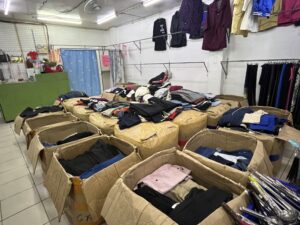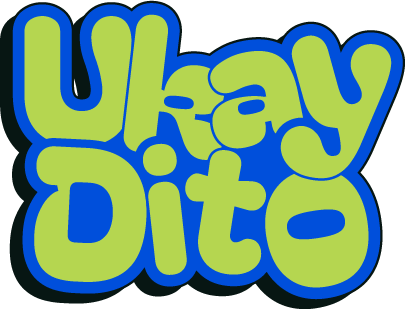
Capital of ukay-ukay
in the philippines: baguio city

Baguio in the northern Philippines first earned a reputation as a vacation spot when the Americans, at the turn of the century, established a colonial hill station in a plateau 5,000 feet above sea level. However, ukay-ukay in Baguio city describes the thriving secondhand clothing industry that is slowly shifting the city’s image from tourist capital to castoff clothing hub. The thriving secondhand clothing industry has been slowly shifting the city’s image from solely a tourist capital to a castoff clothing hub for the Filipino market. As it gained popularity in Baguio, both visitors and locals contributed to the contemporary concept of ukay-ukay, seeking to support their city as the capital of ukay-ukay.
Baguio City municipal officials issue daily vending permits to street vendors selling secondhand clothing. A new move to control this growing trade; and Baguio’s numerous permanent ukay ukay stores routinely obtain their business permits to sell dry goods, which are quite visibly used clothing. Another phenomenon in Baguio city are the huge piles of secondhand clothes on the streets, and shoppers gladly dig through or do the halukay in search of the perfect ukay.
The sellers of street ukay-ukay have to set up everything from scratch, and after they are finished for the day, they also physically pack everything away. This is one of the differences between street ukay-ukay and in-store ukay-ukay, which is almost similar. One of the difficulties associated with street ukay-ukay is that when it rains, street vendors of ukay-ukay are required to cover their ukay-ukay clothing so that they don’t get wet.

The standard procedure for supplying and obtaining ukay-ukay from the local wholesaler in Baguio involves many steps, these are the following: The wholesaler may opt to sell the boxes “as is” to the retailers. Boxes are paid for in cash, with a few IOU concessions made to special sukis who have developed ‘good credit standing’ over the years. 2. The wholesaler may choose to keep a few boxes to sell in her own retail stall.
The Baguio Market center is the location of the majority of the ukay stalls. If her stall carries only ‘brand name’ items, she reopens the boxes and selects the goods one by one. If the Hong Kong connection is being run efficiently, the boxes would already have been identified as Class A, B or C. Class A refers to all quality and brand name goods. Class B boxes may contain a mix of quality and so-so items. Class C boxes contain the ‘not-so-good’ items or the bulok (spoiled), patapon (cast off) or basura (trash) (Locsin, 2007).
